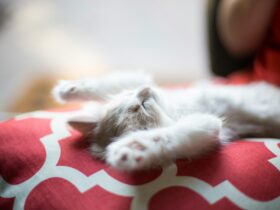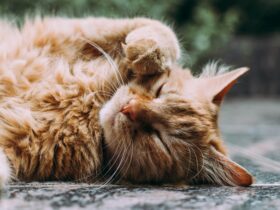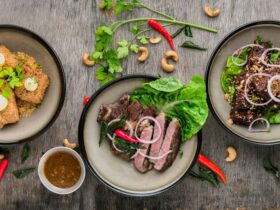Blog: How to Reduce Cat Dander & Allergies | I’m a Vet Tech, and Here’s What I Think About Raw Food Diets for Pets
Introduction
As a vet tech, I’ve seen a growing interest in raw food diets for pets. Pet owners are often drawn to the idea of feeding their pets a more “natural” diet, similar to what their ancestors might have eaten in the wild. However, the trend has sparked considerable debate among pet professionals, particularly regarding its safety, nutritional adequacy, and impact on common pet issues like allergies and dander. In this blog, I’ll share my perspective on raw food diets for pets, focusing on their potential benefits and risks, and how they may influence your cat’s dander and overall health.
Understanding Cat Dander and Allergies
What is Cat Dander?
Cat dander is composed of tiny, even microscopic, flakes of skin shed by cats. These flakes are coated with proteins, notably Fel d 1, which is found in a cat’s saliva, skin oils, and urine. This protein is a significant allergen for many people, leading to allergic reactions such as sneezing, itching, and respiratory issues.
How Diet Affects Dander
Your cat’s diet directly impacts the condition of its skin and coat, which in turn influences the amount of dander produced. A diet that supports healthy skin can help reduce excessive shedding and dander, potentially lowering the allergen load in your home.
What is a Raw Food Diet for Pets?
Components of a Raw Food Diet
A raw food diet typically consists of uncooked animal products such as:
- Raw Meat: Including muscle meat, organs, and bones.
- Raw Eggs: Often included for additional protein and nutrients.
- Vegetables and Fruits: Some raw diets include small amounts of fruits and vegetables.
- Supplements: Often necessary to ensure the diet is nutritionally complete.
Types of Raw Food Diets
- Homemade Raw Diets: Prepared at home by pet owners, often following recipes that may or may not be nutritionally balanced.
- Commercial Raw Diets: Available as frozen or freeze-dried options, these are marketed as complete and balanced but still carry certain risks.
Potential Benefits of Raw Food Diets
1. Improved Coat Condition
Advocates of raw diets often claim that pets fed raw foods have shinier coats and healthier skin. The high levels of animal fat and protein in raw diets can indeed support a glossy coat, which might reduce shedding and dander.
2. Better Digestive Health
Raw diets are said to be more digestible because they are less processed. Improved digestion can lead to better nutrient absorption, which is crucial for skin health and can help reduce dander.
3. Increased Energy Levels
Some pet owners report that their pets have more energy and vitality on a raw diet. Enhanced overall health may contribute to better skin and coat condition, reducing dander production.
4. Fewer Allergic Reactions
Proponents argue that raw diets can reduce food-related allergies, which may in turn reduce skin irritation and dander. However, this claim is controversial and lacks robust scientific backing.
Risks and Concerns of Raw Food Diets
1. Nutritional Imbalances
One of the biggest concerns with raw diets is the risk of nutritional imbalances. Without careful formulation, a raw diet can lack essential nutrients like calcium, taurine, and vitamins, leading to serious health issues. Poor nutrition can negatively affect skin health, potentially increasing dander.
2. Bacterial Contamination
Raw meats can harbor harmful bacteria such as Salmonella, E. coli, and Listeria, which can pose health risks to both pets and humans. This is particularly concerning for households with children, elderly individuals, or immunocompromised persons.
3. Parasite Transmission
Raw meat can contain parasites that, if not properly handled or frozen, can infect your pet. These infections can cause a range of health issues, including skin conditions that might increase dander.
4. Risk of Bone Injuries
While bones are a natural part of a carnivorous diet, they can pose choking hazards or cause gastrointestinal blockages or injuries if not handled correctly. These issues can lead to health problems that indirectly affect skin and coat health.
Raw Diets and Cat Dander: What’s the Connection?
1. Potential Reduction in Dander
If a raw diet is properly balanced and improves your cat’s overall health, including skin and coat condition, it may help reduce dander production. The high protein and fat content, along with essential fatty acids, can support skin health, reducing the likelihood of dry, flaky skin.
2. Increased Risk of Allergens
On the flip side, the handling of raw food can increase the risk of spreading allergens in your home. Raw meat juices and particles can contaminate surfaces, potentially increasing the allergen load and exacerbating allergy symptoms in sensitive individuals.
3. The Role of Supplements
For those who choose to feed a raw diet, incorporating supplements that promote skin health—such as omega-3 fatty acids, zinc, and vitamin E—can help mitigate some of the risks related to dander. However, care must be taken to avoid over-supplementation, which can cause other health issues.
My Perspective as a Vet Tech
1. Balanced Nutrition is Key
As a vet tech, I cannot overemphasize the importance of a balanced diet. Whether you choose a raw or cooked diet, the key is to ensure it meets all of your pet’s nutritional needs. A nutritionally complete diet is essential for maintaining healthy skin and reducing dander.
2. Safety Concerns
While the idea of feeding a raw diet may appeal to some, the risks associated with bacterial contamination and nutritional imbalances are significant. For most pet owners, these risks outweigh the potential benefits. Moreover, the handling of raw food requires strict hygiene practices to prevent cross-contamination, which can be difficult to maintain consistently.
3. Consult with a Veterinarian
Before switching to a raw diet, I strongly recommend consulting with a veterinarian or a veterinary nutritionist. They can help you design a diet that meets your pet’s needs while minimizing risks. This is especially important if your cat has existing health issues or allergies.
4. Consider the Whole Picture
When it comes to managing cat dander and allergies, diet is just one piece of the puzzle. Regular grooming, proper hygiene, and maintaining a clean living environment are equally important in keeping dander under control.
Conclusion
Raw food diets for pets are a controversial topic, with passionate advocates on both sides of the debate. While there may be some potential benefits, the risks associated with raw diets—such as bacterial contamination, nutritional imbalances, and the potential for increased allergen exposure—are significant. As a vet tech, my advice is to prioritize balanced nutrition, safety, and the overall health of your pet. If you are considering a raw food diet for your cat, do so under the guidance of a veterinarian to ensure it supports their health and minimizes dander production.










Leave a Reply